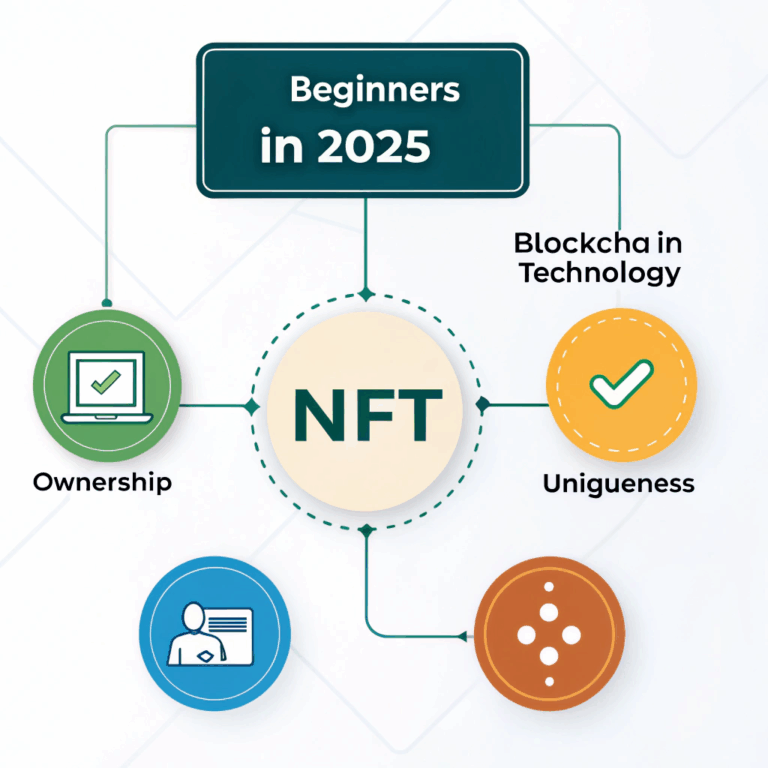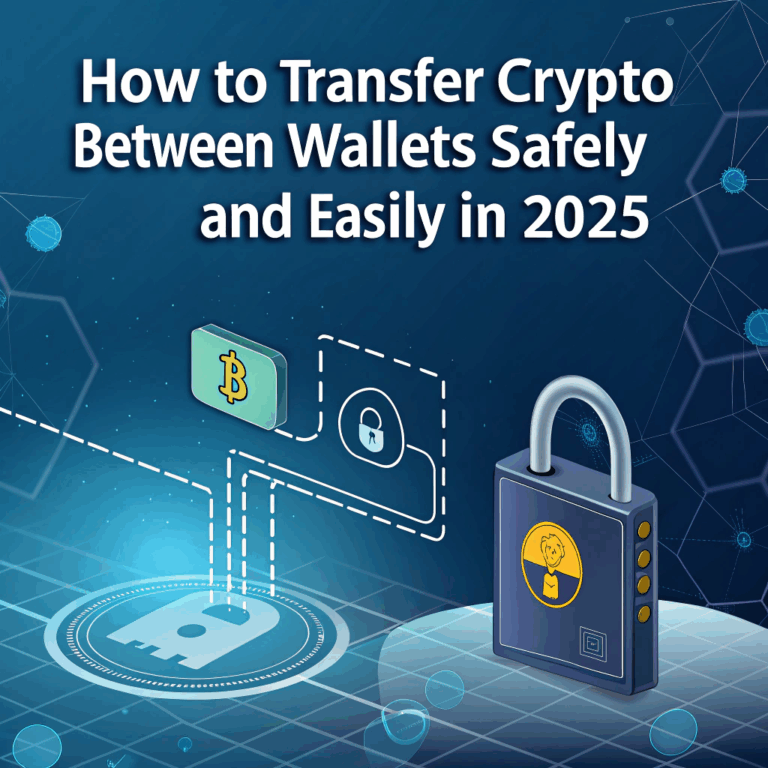How to Transfer Crypto Between Wallets (Safely and Easily in 2025)

Introduction
Transferring crypto between wallets is a basic but essential skill for anyone using blockchain. Whether you’re moving funds to cold storage, a DEX wallet, or sending crypto to a friend — doing it safely matters. Here’s exactly how to do it in 2025, step by step.
Why Transfer Crypto Between Wallets?
- Move assets from an exchange to a hardware wallet
- Split funds between wallets for security
- Send crypto to another user or wallet
- Fund a DeFi wallet for staking, swapping, or NFTs
- Backup or migrate to a new device
Transferring crypto helps you stay in control of your assets.
What You Need Before You Transfer
✅ Sender wallet: With crypto balance
✅ Receiver address: Where you’re sending crypto
✅ Correct network selection (ETH, BNB, BTC, etc.)
✅ Gas fees ready in native token (e.g., ETH for Ethereum)
✅ Access to both wallets (for confirmation & checking)
Step-by-Step Guide to Sending Crypto
Example: Send ETH from MetaMask to Trust Wallet
- Open MetaMask
- Click “Send”
- Paste the receiver’s ETH address (from Trust Wallet)
- Enter the amount
- Select network (Ethereum Mainnet)
- Review gas fees
- Click “Confirm”
- Wait for block confirmation (usually seconds to minutes)
Once confirmed, the crypto appears in the destination wallet.
Important Safety Tips
- Always double-check the receiving address
- Send a small test transaction first if it’s your first time
- Make sure you’re on the right blockchain (ERC-20 ≠ BEP-20!)
- Bookmark wallet apps to avoid phishing
- Never copy/paste from untrusted sources
Understanding Network Fees and Confirmations
- Every blockchain charges a network fee
- You pay fees in the network’s native token (e.g., SOL, MATIC, ETH)
- Confirmations vary:
- Bitcoin: ~10–60 minutes
- Ethereum: ~1–10 minutes
- Solana: ~few seconds
Use a block explorer to track your transaction live.
Common Mistakes to Avoid
🚫 Sending to the wrong blockchain (e.g., BNB on Ethereum)
🚫 Using an address for a different coin (e.g., sending BTC to an ETH address)
🚫 Not having gas fees in your wallet
🚫 Sending large amounts without testing
🚫 Trusting screenshots or copied addresses without verifying
Best Wallets for Easy Transfers (2025)
- MetaMask – Leading for Ethereum and EVM chains
- Trust Wallet – Multi-chain, mobile-friendly
- Ledger Live – Pairs with Ledger hardware wallets
- Phantom – Best for Solana
- Coinbase Wallet – Good for cross-chain and beginners
Tools to Track Your Transactions
- Etherscan (Ethereum)
- BscScan (BNB Chain)
- Solscan (Solana)
- Polygonscan (Polygon)
- Blockchair (Multi-chain)
Paste your TxID or wallet address to track transfers and fees.
What to Do If You Send to the Wrong Address
- If you sent to a valid address: Funds are lost unless the owner returns them
- If you sent to the wrong network: You may recover funds if you control both wallets (e.g., same private key on different chains)
- If you used a centralized exchange: Contact their support immediately
In all cases: Act fast, save the TxID, and never send more until resolved.
FAQ
Can I cancel a crypto transaction after sending?
No. Blockchain transactions are final once confirmed.
What’s the cheapest network to transfer on?
Solana, Polygon, and BNB Chain are among the lowest-fee networks in 2025.
Is it safe to transfer large amounts?
Yes — if you’ve verified the address, use hardware wallets, and test first.
What happens if I don’t have enough for gas fees?
The transaction won’t go through. Always keep a small balance in the native coin.
Conclusion
Transferring crypto between wallets is easy once you understand the steps — but one small mistake can be costly. Always double-check, start small, and use trusted tools. In 2025, self-custody and wallet control are more important than ever — and knowing how to move your funds securely is key.





